Chapter 10b: Writing Letters of Intent to Collaborate
“Collaboration is a key part of the success of any organization, executed through a clearly defined vision and mission and based on transparency and constant communication.”
–Dinesh Paliwal
Objectives
By the end of this chapter, students will be able to:
- Explain the importance of effective letters of intent in maintaining business relationships and fostering environmental sustainability.
- Identify the key elements of an effective letter of intent in a business context.
- Evaluate situations and determine when to use a letter of intent.
- Apply the letter of intent template to create structured and impactful business letters of intent.
- Critically examine real-world examples of letters of intent to understand best practices and common pitfalls.
Introduction
Businesses can claim to join an environmental pact to show genuine commitment, reputation enhancement, investor relations, and competitive advantage. A formal letter would help make the intent to join a pact more professional and serious in tone.
Letters of intent (LOIs) are an essential tool for formalizing initial pledges in the context of commercial and nonprofit initiatives for environmental sustainability. These documents guarantee that all participants are aligned with fundamental conditions before going further, thus laying the groundwork for future agreements and cooperation. Nonprofits and businesses may require a letter of intent before deciding to partner with each other. This chapter offers a thorough review of LOIs, their uses, and best practices for efficient writing of them.
Environmental Pacts and Businesses that May Join Them
Below are logos and descriptions of 5 major pacts related to conserving the planet and why businesses may consider joining them.
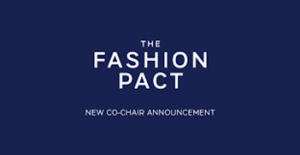
The Fashion Pact is a global coalition of leading fashion and textile companies committed to achieving practical objectives in three areas: stopping global warming (by achieving net-zero greenhouse gas emissions by 2050), restoring biodiversity, and protecting the oceans. It focuses on collective action and scalable solutions across the fashion value chain. Businesses join to demonstrate leadership in sustainability within the fashion industry, align with industry-wide environmental goals, collaborate with peers on systemic challenges (like supply chain transparency and circularity), and enhance their brand reputation among environmentally conscious consumers and investors. [1]
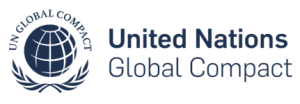
The UN Global Compact is the world’s largest corporate sustainability initiative, calling on companies to align their strategies and operations with ten universal principles on human rights, labor, environment, and anti-corruption, and to take action in support of UN goals, including the Sustainable Development Goals (SDGs). Companies join to formalize their commitment to responsible business practices, integrate sustainability into their core strategy, enhance their credibility and trustworthiness, gain access to a global network for learning and partnerships, and demonstrate their contribution to broader societal goals like the SDGs. [2]

CDP (formerly Carbon Disclosure Project) is a global non-profit that runs the world’s environmental disclosure system for companies, cities, states, and regions. It helps organizations measure and manage their environmental impacts by encouraging them to report data on climate change, water security, and deforestation. Companies respond to CDP disclosure requests (often driven by investor or customer demands) to demonstrate transparency in their environmental performance, identify and manage climate-related risks and opportunities, enhance investor confidence, benchmark against peers, and comply with growing regulatory expectations for environmental reporting. [3]

Science Based Targets initiative (SBTi) is a collaboration between CDP, the United Nations Global Compact, World Resources Institute (WRI), and the World Wide Fund for Nature (WWF) that helps companies set ambitious, verifiable greenhouse gas emission reduction targets based on the latest climate science, consistent with keeping global warming to 1.5°C above pre-industrial levels. Businesses join to demonstrate a credible, scientifically-backed commitment to climate action, future-proof their operations against climate risks, meet investor demands for robust climate strategies, drive innovation in their supply chains, and gain a competitive advantage by aligning with global climate goals. [4]
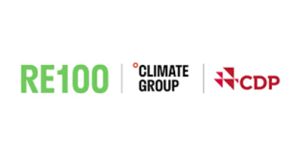
RE100 is a global initiative led by Climate Group in partnership with CDP, bringing together the world’s most influential businesses committed to 100% renewable electricity. It aims to accelerate global progress towards zero-carbon grids. Companies join to publicly commit to and achieve their renewable electricity goals, showcase leadership in corporate sustainability, reduce operational emissions, gain access to a network of leading companies and policy makers, and advocate for policy reforms that support renewable energy deployment. [5]
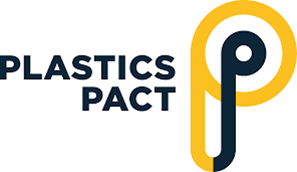
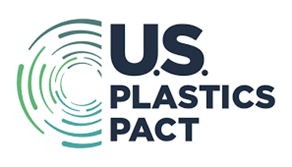
Plastics Pact Network (e.g., U.S. Plastics Pact) involves a series of interconnected regional and national initiatives, facilitated by the Ellen MacArthur Foundation, that bring together businesses, governments, NGOs, and citizens to work towards a circular economy for plastics. Members commit to ambitious targets for plastic reduction, reuse, recycling, and recyclability. Businesses join to collaboratively tackle systemic plastic waste challenges, accelerate innovation in sustainable packaging and business models, meet evolving consumer and regulatory demands for plastic reduction, enhance brand reputation, and contribute to a shared vision of eliminating plastic pollution. [6]
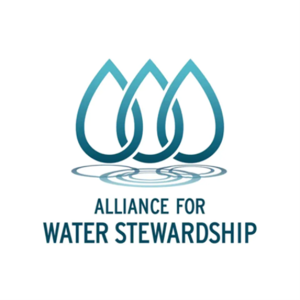
Water Stewardship (e.g., Alliance for Water Stewardship – AWS) as mentioned in a previous chapter, includes initiatives that promote the responsible use of freshwater that is socially equitable, environmentally sustainable, and economically beneficial. AWS provides a global standard that defines best practices for water stewardship across sites and catchments. Companies join to mitigate water-related risks (e.g., scarcity, pollution, regulatory changes), enhance operational efficiency, build trust with local communities and stakeholders, demonstrate environmental responsibility, and ensure long-term access to reliable water resources, which is crucial for many industries.[7]
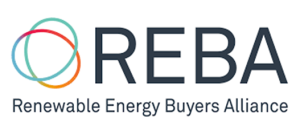 Renewable Energy Buyers Alliance (REBA) is a non-profit organization that brings together energy buyers, project developers, and service providers to accelerate the transition to a carbon-free energy system in the United States. REBA aims to catalyze more than 60 GW of new renewable energy by 2030 by making it easier for large energy buyers to purchase renewable electricity. Businesses join REBA to simplify and accelerate their transition to renewable energy, gain access to expertise and resources for large-scale renewable energy procurement, collaborate with peers, influence market design, and achieve their corporate sustainability and emissions reduction goals. [8]
Renewable Energy Buyers Alliance (REBA) is a non-profit organization that brings together energy buyers, project developers, and service providers to accelerate the transition to a carbon-free energy system in the United States. REBA aims to catalyze more than 60 GW of new renewable energy by 2030 by making it easier for large energy buyers to purchase renewable electricity. Businesses join REBA to simplify and accelerate their transition to renewable energy, gain access to expertise and resources for large-scale renewable energy procurement, collaborate with peers, influence market design, and achieve their corporate sustainability and emissions reduction goals. [8]
What Is a Letter of Intent (LOI)?
A letter of intent (LOI) is a formal declaration of a one-party preliminary commitment to doing business with another. The letter describes the main conditions of a possible agreement. When two people first come together to hammer out the broad strokes of a contract before the finer elements of a transaction are worked out, LOIs are helpful. LOIs often contain clauses that a transaction may only go through if finance has been obtained by one or both parties, or that a contract may be withdrawn should documents not be signed by a certain deadline.
LOIs can be iterative in nature. One party may present an LOI, to which the other party may either counter with a modified version of that LOI or draft a new document altogether. Ideally, by the time both parties come together to formalize a deal, there will be no surprises on either side of the table. A LOI is usually drafted and signed while negotiations between parties are ongoing so that the final terms of a deal might vary from what was agreed upon in the letter of intent. Due diligence is conducted by both parties before doing business. Due diligence means taking the steps necessary to satisfy a legal requirement. It is a prudent business practice to complete due diligence before signing a LOI. [8]
The Purpose of a Letter of Intent (LOI)
Letters of intent may be used by different parties for many purposes. Parties can use an LOI to outline some of the basic, fundamental terms of an agreement before they negotiate and finalize all the fine points and details. Furthermore, the LOI may be used to signal that two parties are negotiating a deal such as a merger or joint venture (JV).
Overall, LOIs aim to achieve the following:
- Clarify key points of a deal that may be negotiated.
- Protect all parties involved in the deal.
Announce the nature of the deal, such as a joint venture or a merger between two companies. [9]
How Letters of Intent (LOIs) Are Used
In the context of business deals, LOIs are typically drafted by a company’s legal team, which outlines the details of the intended action. For example, in the merger and acquisitions (M&A) process, LOIs detail whether a firm plans to take over another company with cash or through a stock deal.
Letters of intent also have applications beyond the business world. For example, parents may use them to express the expectations they have for their children in the event both parents die. Although they aren’t legal documents like wills, LOIs may be considered by family court judges responsible for legislating what happens to the children under such circumstances.
LOIs are also used by those seeking government grants, and by highly sought-after high school varsity athletes. These individuals frequently draft LOIs to declare their commitments to attend particular colleges or universities.
In the context of sustainable businesses, LOIs are crucial for formalizing commitments to environmental action pacts and partnerships. For example, all prospective members of The Fashion Pact must have approved near-term Science Based Targets (SBTs) covering scopes 1, 2 & 3 of GHG emissions by the time of their application to join. [10] Below is a template for a basic letter of intent.
Letter of Intent Template
[Your Name]
[Your Address]
[City, State, ZIP Code]
[Date]
[Recipient’s Name]
[Recipient’s Title]
[Company Name]
[Company Address]
[City, State, ZIP Code]
Dear [Recipient’s Name],
Introduction: State the purpose of the letter and introduce the parties involved. Mention the preliminary agreement and its significance.
Body:
- Scope of Agreement: Describe the nature of the deal, including the key terms and conditions.
- Responsibilities: Outline the responsibilities of each party.
- Timeline: Provide a timeline for negotiations and finalizing the agreement.
- Confidentiality: Include any confidentiality agreements if applicable.
- Due Diligence: Mention that due diligence will be conducted by both parties before finalizing the deal.
Conclusion: Reiterate the intent to formalize the agreement and express optimism for a successful partnership. Provide contact information for further communication.
Sincerely,
[Your Name]
[Your Title]
[Your Company]
[Contact Information]
An Example Letter of Intent
September 1, 2024
Ms. Jane Smith
Director of Sustainability
GreenFuture Textiles
123 Green Road
Eco City, EC 12345
Dear Ms. Smith,
I am writing to express our intent to collaborate with GreenFuture Textiles on an ambitious sustainability project aimed at reducing greenhouse gas emissions in the textile industry. This preliminary agreement outlines our commitment to developing innovative solutions for sustainable textile production.
This collaboration will focus on reducing GHG emissions across our supply chain, implementing energy-efficient technologies, and promoting sustainable practices among our partners.
Our company, EcoFashion Inc., will lead the research and development efforts, while GreenFuture Textiles will provide the necessary resources and expertise for implementation.
We propose a six-month negotiation period, followed by a two-year implementation phase.
Both parties agree to maintain confidentiality regarding proprietary information shared during this collaboration.
Due diligence will be conducted by both parties to ensure the feasibility and sustainability of the proposed solutions.
We are excited about the potential of this collaboration to drive significant environmental benefits and look forward to formalizing our agreement. Please feel free to contact me at (555) 123-4567 or email john.doe@ecofashion.com for further discussions.
Sincerely,
John Doe
CEO
EcoFashion Inc.
123 Sustainable Lane
Eco City, EC 54321
john.doe@ecofashion.com
(555) 123-4567
Below is an image annotating what to put where for a traditional business letter format, such as heading, inside address, salutation, body, closing, and signature:
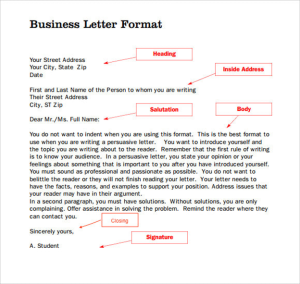
You can also download templates on the internet or Word by going to File, New, New from Template, and searching for letter.
[1] The Fashion Pact. (n.d.). About us. From https://thefashionpact.org/about-us/
[2] United Nations Global Compact. (n.d.). About the UN Global Compact. From https://www.unglobalcompact.org/about
[3] CDP. (n.d.). About us. Fom https://www.cdp.net/en/info/about-us
[4] Science Based Targets initiative. (n.d.). About us. Retrieved [Date you retrieved it, e.g., July 30, 2025] from https://sciencebasedtargets.org/about-us
[5] Climate Group. (n.d.). RE100: The global corporate renewable energy initiative. From https://www.theclimategroup.org/our-work/programmes/re100
[6] Ellen MacArthur Foundation. (n.d.). Plastics Pact Network. From https://www.ellenmacarthurfoundation.org/our-work/plastics-and-economy/plastics-pact-network
[7] Alliance for Water Stewardship. (n.d.). About us. Retrieved [Date you retrieved it, e.g., July 30, 2025] from https://a4ws.org/about-us/
[8] APA Citation for More Info: Renewable Energy Buyers Alliance. (n.d.). About REBA. From https://reba.global/about-reba/
[9] Bloomenthal, A. (2024, February 20). How to Use a Letter of Intent (LOI) to Make a Deal. Investopedia. https://www.investopedia.com/terms/l/letterofintent.asp
[10] Become a member – The Fashion Pact. (2024, May 23). The Fashion Pact. https://www.thefashionpact.org/become-a-member
[11] Business Letter Format. (n.d.). Coach Sparrow Reading. From https://coachsparrowreading.weebly.com/letter-writing.html